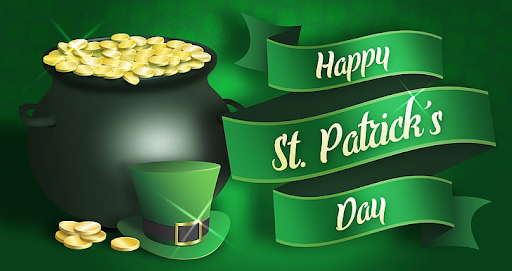An international holiday with the symbol of a shamrock and widely associated with the color green, St. Patrick’s Day commemorates the life of Saint Patrick. Although a widely recognized holiday, much of its history and significance remains unknown to society.
Born in Britain, Saint Patrick lived from the year 385 CE to 461 CE. He was taken as a slave to Ireland when he was a teenage boy, but when he was older, he was able to escape. Later in life, Patrick traveled to Europe and was trained for priesthood. Because of his faith and calling from God, he returned to Ireland to teach the Bible and spread Christianity, where he died at Saul, United Kingdom. The specific day that celebrates St. Patrick is supposedly the day he died, March 17.. St. Patrick not only represents bravery to be a missionary, but also being merciful and forgiving. Out of love for the Irish people and out of trust in God, he preached to Ireland, though they made him a slave years before.
Now, you may be wondering what this has to do with all the green? The four leaf clovers? The leprechauns?
Originally, St. Patrick’s day was associated with the color blue. Green was integrated for a few reasons: one, because Ireland is green, two, because the shamrock (a 3-leaf clover) is green, and leprechauns are widely believed to like to wear green, though leprechauns originally perceived as wearing red!
Often seen as a pivotal symbol of the holiday, four leaf clovers aren’t as important to St. Patrick’s Day as widely believed; it is actually the shamrock, a three-leaf clover that is the holiday’s symbol, originally used by St. Patrick to explain the Holy Trinity. The four leaf clover’s significance to the holiday has been misconstrued over the years, and four leaf clovers are mainly just valued as being lucky. It is unclear where this idea originated but it is well known that four leaf clovers are extremely rare. When considering the genetics in clovers, a fourth leaf is a recessive trait, making it more uncommon and therefore, at least for superstitious people “more lucky.”
Originating in Ireland as a religious tradition, Irish immigrants are said to have brought the holiday to America, where it has been highly commercialized and lost most of its religious affiliation.These differences have spurred many unique American traditions diverging from St. Patrick’s Day’s original Christian traditions. A few examples include Chicago dying its river green since 1962, wearing green or else you get pinched, eating corned beef, and making leprechaun traps.
However you celebrate this holiday, remember that this day is commemorating St. Patrick’s life as a missionary and have fun knowing the history behind all these traditions! Happy St. Paddy’s Day! (Fun fact: “Paddy is a nickname for Pádraig, which is the Irish spelling of Patrick”)


